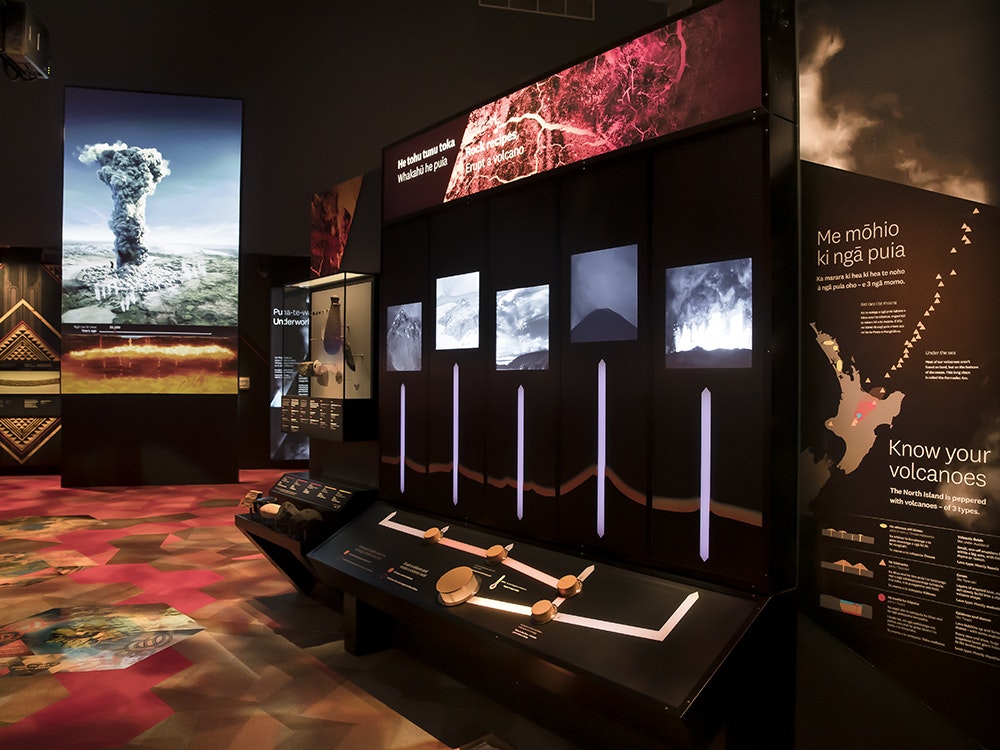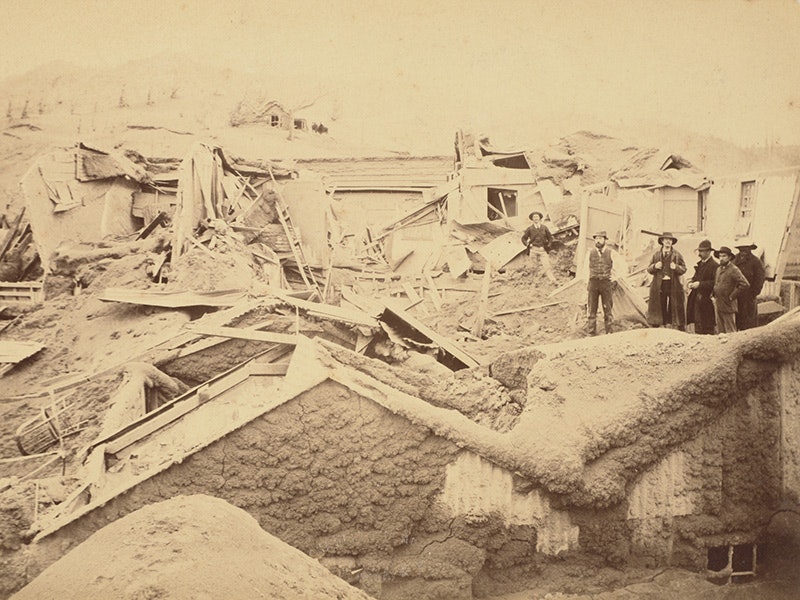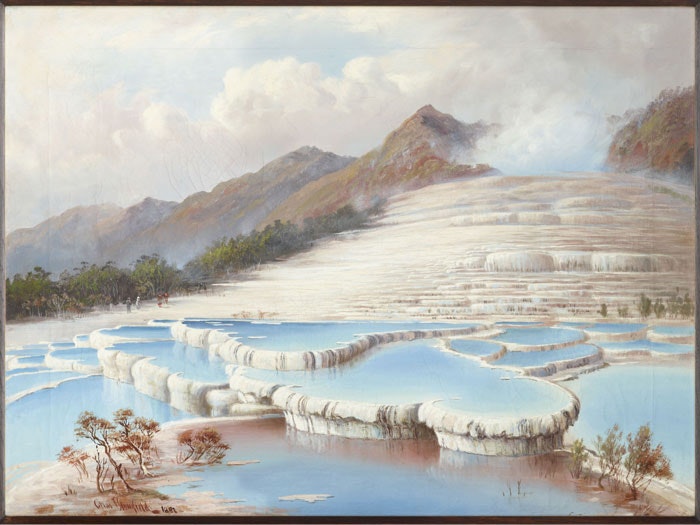
Taupō supervolcano and calderaTaupō hūnga kerekere me he tawhā
Our biggest volcano isn’t a cone. It’s Lake Taupō, formed about 25,500 years ago in the massive Ōruanui eruption.
***
Ehara i te kōeko te puia nui rawa o tēnei whenua. Ko Taupō he roto kē, i āhua mai i te 25,500 tau ki mua, he mahi atua e kīia ana ko te pahūtanga o Ōruanui.
Taupō caldera
The huge eruption spat out so much magma that the ground collapsed kilometres downward and left a caldera – a gigantic collapsed block of land – in its wake. Water filled the hole, and Lake Taupō was formed.
Watch a reconstruction of this event below.
Taupō supervolcano – Ōruanui eruption, 25,500 years ago
Reference landscape image courtesy of LINZ. CC BY 4.0, Rūaumoko illustration by Ben Te Aika
Volcano factory
The Pacific Plate plunges beneath the eastern North Island, 4cm every year. Pressure builds. Rock melts. Hot magma rises and feeds a long chain of volcanoes.
The Earth’s crust is unusually thin in the Taupō Volcanic Zone. Magma gets close to the surface – and sometimes breaks through. Every now and then, huge eruptions leave giant holes in the landscape.
Heaps of magma and falling ash
The volume of erupted material was 8–9 times the volume of water in Lake Taupō today.
Volcanic material filled the air. Most fell on the North Island, but some landed as far away as the Chatham Islands.
How much ash fell?
Ahuriri | Napier 2m
Tūranga-nui-a-Kiwa | Gisborne 1.2m
Whakatāne 1m
Te Papaioea | Palmerston North 50cm
Tauranga 40cm
Pōneke | Wellington 20cm
Rēkohu/Wharekauri | Chatham Islands 18cm
Ngāmotu | New Plymouth 15cm
Still active
After an eruption in the central North Island, volcanic ash could cover the entire island and beyond.
Since Ōruanui, there’ve been 28 smaller eruptions of Taupō. No super eruption will happen in your lifetime – the magma takes too long to build.
Thanks to monitoring by GNS Science, we can expect some warning before the next one.
Taupō is a global star – the world’s most active supervolcano. It’s studied by scientists everywhere.
More about the realm of Rūaumoko, god of volcanoes and earthquakes, and the geological forces that shape our shaky land can be found in Te Taiao | Nature on Level 2.

